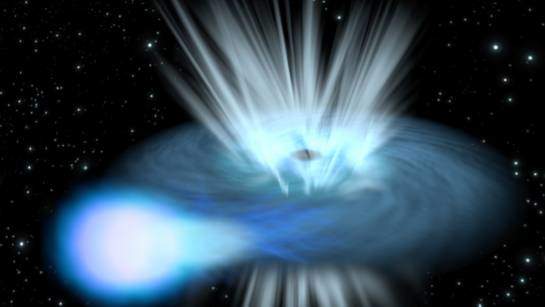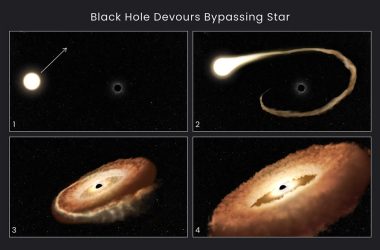
ESA-(ENEWSPF)- ESA’s XMM-Newton has discovered gas streaming away at a quarter of the speed of light from very bright X-ray binaries in two nearby galaxies.
At X-ray wavelengths, the celestial sky is dominated by two types of astronomical objects: supermassive black holes, sitting at the centres of large galaxies and ferociously devouring the material around them, and binary systems, consisting of a stellar remnant – a white dwarf, neutron star or black hole – feeding on gas from a companion star.
In both cases, the gas forms a swirling disc around the compact and very dense central object: friction in the disc causes the gas to heat up and emit light at many wavelengths, with a peak in X-rays.
Not all of the gas is swallowed by the central object though, and some of it might even be pushed away by powerful winds and jets.
But an intermediate class of objects was discovered in the 1980s and is still not well understood. Ten to a hundred times brighter than ordinary X-ray binaries, these sources are nevertheless too faint to be linked to accreting supermassive black holes, and in any case, are usually found far from the centre of their host galaxy.
“We think these ‘ultra-luminous X-ray sources’ are somewhat special binary systems, sucking up gas at a much higher rate than an ordinary X-ray binary,” explains Ciro Pinto from the Institute of Astronomy in Cambridge, UK.
“Some host highly magnetised neutron stars, while others might conceal the long-sought-after intermediate-mass black holes, which have masses around 1000 times the mass of the Sun. But in the majority of cases, the reason for their extreme behaviour is still unclear.”
Ciro is the lead author of a new study, based on observations from ESA’s XMM-Newton, revealing for the first time strong winds gusting at very high speed from two of these exotic objects. The discovery, published in this week’s issue of the journal Nature, confirms that these sources conceal a compact object accreting matter at extraordinarily high rates.
Ciro and his colleagues delved into the XMM-Newton archives and collected several days’ worth of observations of three ultra-luminous X-ray sources, all hosted in nearby galaxies located less than 22 million light-years from our Milky Way.
The data were obtained over several years with the Reflection Grating Spectrometer, a highly sensitive instrument that allowed them to spot very subtle features in the spectrum of the X-rays from the sources.








